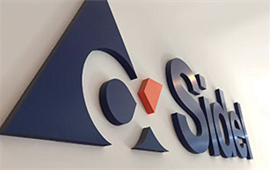Germany has a well-established system for collecting and recycling single-use plastic packaging waste. Product residues in packaging such as toothpaste tubes or shampoo bottles are washed out in the usual recycling process.
Disadvantages of product residues
However, product residues not only mean a loss for consumers and thus unnecessary overproduction. Their weight also leads to higher transport costs and additional effort for their disposal. Residues from food and other filling goods often stick to the packaging surfaces and have to be washed off, which leads to additional work when recycling. In his bachelor’s thesis, Konstantin Schinkel, who is studying Sustainable Materials and Product Design at the Faculty of Technical Systems, Processes and Communication, examined the amount of filling material residues in several hundred packages from a sorting system. Sven Saenlaub, HM Professor of Packaging Technology, supervised him.
More residues with highly viscous products
The samples were washed, dried, and weighed to determine the remaining contents. The result: Especially with filling products with high viscosity, i.e. low flowability, in tubes, an increased proportion of around 10 percent of the weight remains on average, but the results varied greatly: It is obvious that some consumers put in more effort than others to empty the tubes as well as possible.
For more flowable products in tubes, the mean values were lower. In the case of easy-to-empty packaging such as cups and products with low viscosity and better flowability, less than one percent of the weight remains in bottles. “Such data can help identify packaging formats and optimize product compositions where emptying behavior could be improved. “In addition, the data can be relevant to better understand how many unavoidable losses arise from residues during recycling,” says Sven Singerlaub.
Optimize for less residue
There are various methods to improve emptying behavior: One possibility is to optimize the composition and mixing ratio of the filling goods, improve the packaging design, and make modifications to their surfaces and coatings. These measures are already being applied. Toothpaste illustrates the dilemma quite well here: it should not flow from the brush head after application, i.e. it should be viscous, but this behavior also leads to poorer emptying behavior of the packaging.



